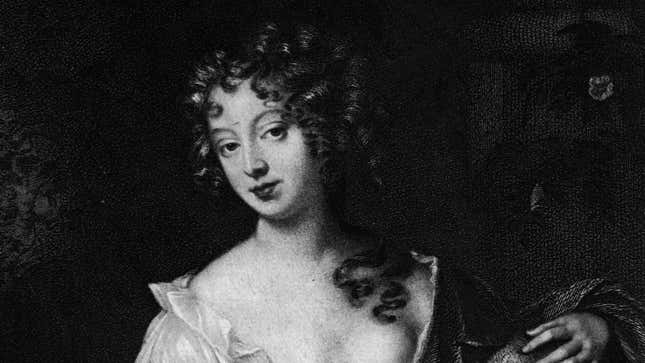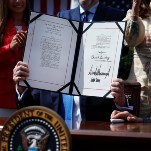The 'Protestant Whore' Who Defined Restoration Theater
In Depth
Image: (Photo by Edward Gooch Collection/Getty Images)
The history of acting is full of stories about women who clawed their way into the business through a combination of wits, beauty, talent, and sheer, unmitigated determination. But first, there was “pretty, witty” Nell Gwyn, a poor London girl who leaped from selling oranges to theatergoers to the stage and then to the bed of a king, leaving a permanent mark on the history of theater in the process.
Theater loomed large in Restoration London. Charles I was executed in 1649 outside the Banqueting Hall of Whitehall Palace, the very center of British government; it was a highly public act of staggering symbolic importance, and it permanently shifted the balance of power between monarch and Parliament. (Once you’ve killed a king, there’s no unringing that bell.) For 11 years, Britain was a Puritan Commonwealth run by Oliver Cromwell as Lord Protector, and public theater was prohibited. Elaborate masques had been a scandalous, expensive, and controversial feature of court life under the Stuart regimes under James I and Charles I, both, with women—even queens—taking part in court performances; the Puritans weren’t as strict or dour as they’re sometimes portrayed (operas were first staged in Britain under the Puritans), but public theaters went dark.
The return of a monarch meant the return of both the spectacle of monarchy and a version of public theater that incorporated exciting advancements that Charles II had encountered in his time in exile on the continent. The stage was redesigned, away from the thrust stages of Shakespeare’s day, which jutted out into the audience; the sets were more elaborate, with the development of moveable scenery. Most importantly: there were women. When Charles II handed out the first “letters patent” (a permission slip and a monopoly, all in one) for theater companies, he required that women play women’s roles, unlike in Shakespeare’s day.
-

-

-

-

-

-

-

-

-

-

-

-

-

-

-

-

-

-

-

-

-

-

-

-

-

-

-

-

-

-

-

-

-

-

-

-

-

-

-

-








































